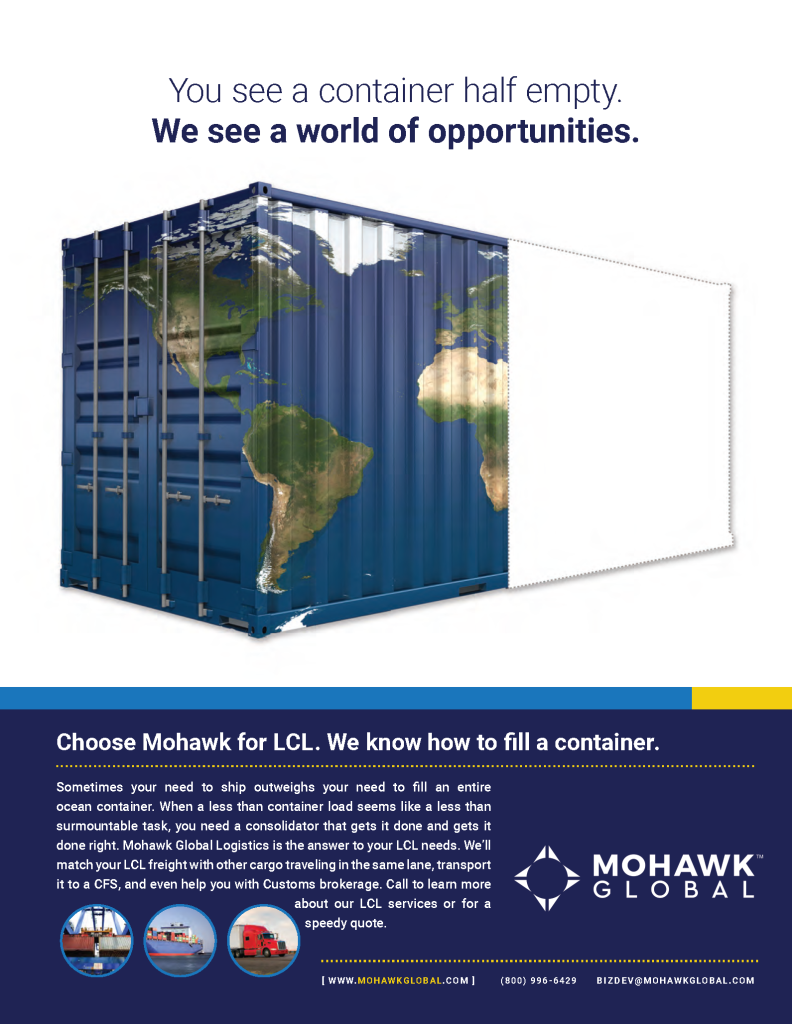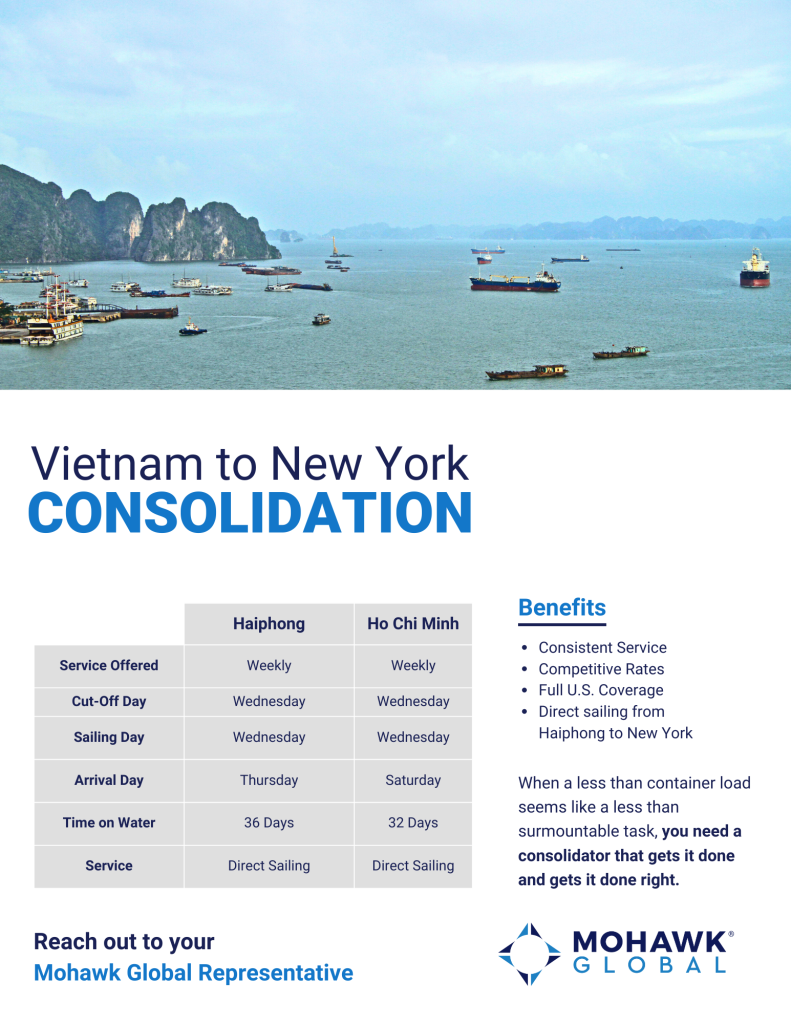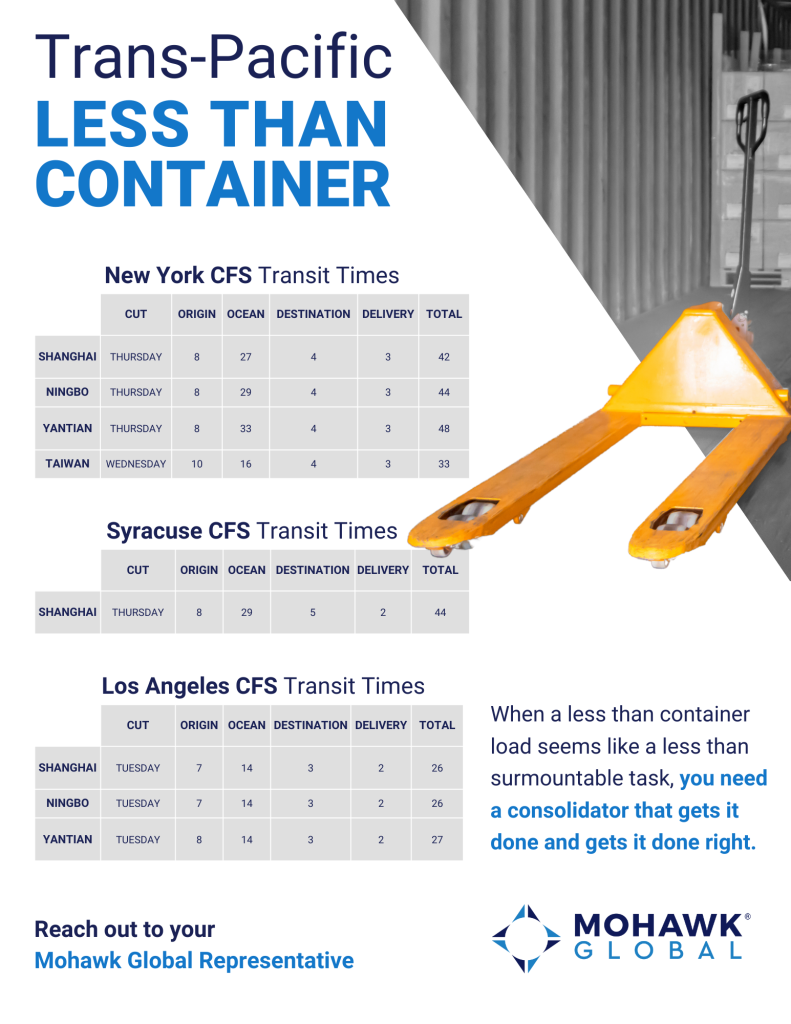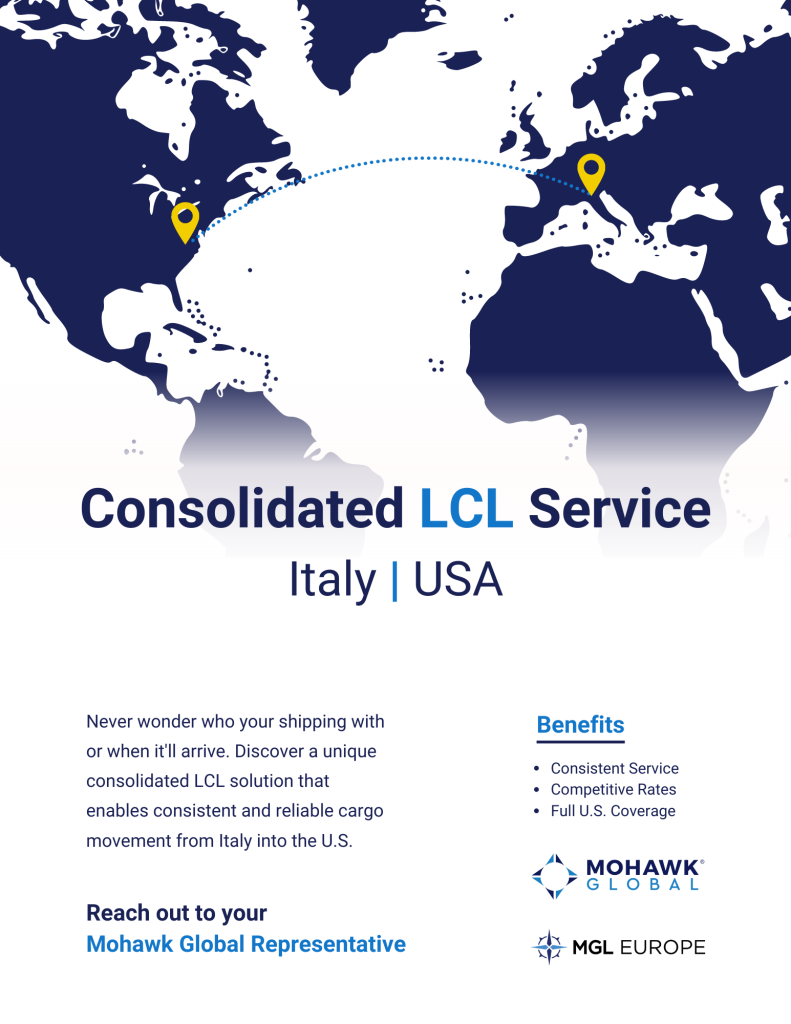
LCL is a term used in sea freight to describe loads that are “less than a container load,” or a shipment that does not fill an entire container. When cargo volume is not enough to fill a full container, different shippers might share a container to create an LCL shipment.
An LCL shipment is usually a cheaper solution since the cost of shipping a full container is shared. When comparing the CBM cost between an LCL shipment and an FCL shipment, LCL will be higher, but the total price is often lower.
At Mohawk Global, we know how to fill a container—reach out for a rate quote based on your unique shipment details.
Reach out todayFactors to consider:
- Volume—It is ideal to consider an LCL agreement if the volume of the goods is between 1 to 18 CBM. Otherwise, shipping via air (for less than 1 CBM) or going full container (for greater than 18 CBM) might be a more economical option.
- Gross Weight—It is best to consider shipping under an LCL agreement if the gross weight of the shipment is more than 150kg during peak season and 200kg during the off-peak season because the shipping rates are dynamic, and it easily changes in response to the changes in supply and demand.
- Product Category—Some products are not allowed to be shipped via air due to airline restrictions such as compressed gasses and aerosol cans. In this case, ocean freight, specifically LCL, can be a good alternative depending on the volume of the shipment.
- Route—Mohawk can provide LCL services between almost all major and minor trade regions. Additionally, Mohawk offers our own consolidations to the United States from various ports in China, Hong Kong, Taiwan, Vietnam, Italy, and Germany. While remote regions may have irregular service, our partner network allows us to provide LCL services to cover almost all corners of the international markets.
- Time—Time plays an essential element in any supply chain. As for businesses that are selling goods on e-commerce websites, the timing could be a hit or a miss. LCL shipment arrivals can vary based on destination, it can take roughly four to seven weeks to be delivered.
Sometimes your need to ship outweighs your need to fill an entire ocean container. When a less than container load seems like a less than surmountable task, you need a consolidator that gets it done and gets it done right.





